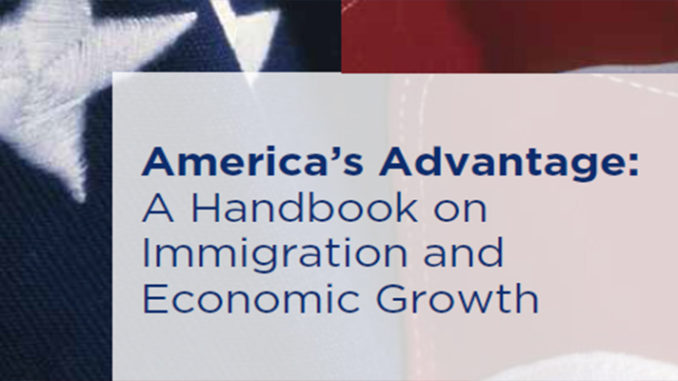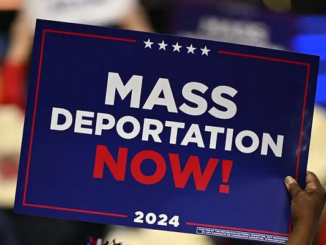
by Laura Collins
The U.S. economy faces a conundrum. Thousands of jobs remain open at the same time that the economy is running at full employment. Employers simply cannot find enough qualified workers.
At one level, this is a good problem to face. Who doesn’t like full employment? Yet our economy produces less when so many jobs are left vacant.
The long-term answer lies in education and training. They are the best means to broaden the supply of workers. In the short term, however, we must turn to immigrants and temporary workers to meet the needs of our labor force.
The benefits of immigration on the supply of labor already are evident. Nearly half the labor force growth in the United States over the last decade is due to immigration. While U.S. productivity growth has been anemic since the Great Recession, it would be even slower, and possibly negative, if we did not have immigrants boosting our labor force.
Still, Washington needs to make our immigration system a tool for more robust economic growth. Temporary workers, for example, can immediately fill labor shortages, particularly in seasonal or high-demand industries like hospitality or construction.
Through our visa programs, we can target the workers we need without inadvertently creating a glut of labor in a particular industry. When these workers’ visas expire, they must return home.
Visas for temporary workers cover all skill levels, too. The most well-known are the H-2A and H-2B for agricultural workers and other low-skilled employees, and the H-1B for highly skilled workers.
As important as these programs are, they are inadequate and badly need reform. For the H-2B and H-1B programs, there are not nearly enough visas available to meet the needs of the labor market.
There are only 66,000 H-2B visas available per year. Fifty percent of the visas are available for each half of the fiscal year. Unused visas from the first half may be carried over to the second, but any unused visas at the end of the year do not roll over into the next fiscal year.
The H-2B can be used for jobs such as construction and hospitality. Yet in construction alone, thousands of available jobs are unfilled. Some construction firms are even turning to convicts to meet their labor needs.
The H-1B visa for highly skilled workers cannot meet industry demands, either. Visas are capped at 85,000 per year. In each year since fiscal year 2014, the cap has been reached within a week of the beginning of the application process. Thousands of firms are left without enough skilled workers, thus limiting their opportunity to produce more.
The problems are different for the H-2A agricultural visa, which does not have a cap. Under this program, visas are valid only for jobs that are seasonal.
As a result, this visa is unworkable for some segments of the agricultural industry, such as dairy farms. There is no growing season for dairy farmers — cows must be tended and milked year round. Further, the red tape involved in procuring visas may prevent agricultural employers from obtaining the workers they need in a timely manner.
The labor force shortage is not only a short-term problem. The U.S. labor force will decline due to simple demographics: Baby boomers will continue to retire, and Americans do not have enough children to replace our current population. In the absence of offsetting growth in productivity, a declining labor force spells a shrinking economy.
But we can maintain or grow our labor force — and our national prosperity — through immigration. Immigrants immediately boost the population, and because they are overwhelmingly working age, they lower the age of our overall labor force.
Immigrants are also good for the long-term growth of our labor force. Immigrants typically have higher rates of fertility than native-born Americans. The immigrants who boost our population today tend to have enough children to help keep our fertility rate from falling even further.
This is not a theoretical fear. We can see this playing out in real time in other developed nations.
The best example is Japan, with its notoriously strict immigration policies and little foreign labor. Japan’s population is rapidly aging, and the older generation is exiting the workforce. This leaves the working-age population much smaller than the retired population.
One result is the economy is shrinking. The gloomy outlook only compounds the problem — young Japanese are delaying marriage and children due to the poor economic environment.
Luckily, we are not Japan. We admit many immigrants and temporary workers each year. But our immigration system is not as good as it could be. One of the big drawbacks is that the system’s primary goal is family reunification rather than emphasizing skills.
There is nothing inherently wrong with a family reunification policy. The United States does not admit immigrants who may become a public charge of the state. Legal permanent residents do not qualify for almost every federal entitlement benefit program until they have been in the country for five years. Without a European-style welfare system, immigrants to the United States must work to survive. So even through the family reunification system, we are bringing in workers.
The main problem with family reunification is that it is not as economically optimal as bringing in immigrants for their skills. By choosing immigrants for the latter, we are able to meet our labor force needs, increase productivity, and stimulate economic growth faster than through a family reunification system.
The United States actually is one of the few developed economies that focuses on family reunification. Australia and Canada, among others, all have immigration policies focused on skills. We compete with them for skilled immigrant labor. We will continue to lose skilled labor to these countries as long as we prioritize families over skills.
Immigration policy is a tool in a pro-growth economic policy. Immigration reform that refocuses our system to prioritize skills would make it an even stronger tool for greater economic growth.
Laura Collins is the deputy director of economic growth at the George W. Bush Institute.



